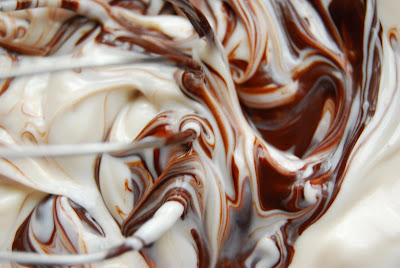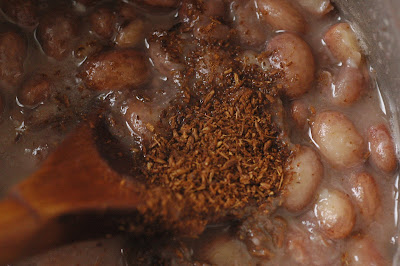
The entire summer, my energies have gone into making bread. I’m not a great baker; however, bread holds this sway over me. The act of baking seems so mysterious and fulfilling. A few years ago I worked in a café adjacent to a bakery. Every morning the bakers would arrive at five a.m. and bake until two in the afternoon. It seemed rather Zen, waking up for the most hopeful and happy part of the day; kneading and rolling out dough; decorating cakes etc.
I have come to recognize that making bread is more about patience and long fermentation time than fancy techniques. I used to wing bread preparation, thus, the end products were always inferior. I was impatient too. I would make little balls of dough filled with crap and skip the rising bit. In most food avenues winging it has been helpful. Not alas, in sauce production; or dessert fabrication; pastry concoction or bread making have my improvisational skills always been of much use.

To understand why my breads never worked, I had to make bread exactly as outlined on the back of my bag of flour. I managed to screw it up. I added far too much water. My bread was palatable but the crust was far too thick and the middle of the bread while cooked could never really dry out per se. I did this about ten times.
There where various reasons for my dough being too wet, one was that I used whole meal rye flour to make a few loaves. The flavor was phenomenal.
I started to buy fresh yeast at my local health food store. I bought good quality strong white flour too. The fresh yeast really made a difference in the taste and texture of my breads. I also gave my breads a long time to ferment. This fermentation period was usually a 24 hours but you can store dough in your fridge for weeks for a truly complex artisan style loaf (The dough must be knocked down every couple of days and fed once a week). I bought some tiles and lined a baking sheet with them to simulate a baker’s oven. I found brand new tiles at the charity shop. It was very inexpensive.
This may seem like a lot of work. It isn't. Patience is all that is needed. I don’t have a bread machine or a mixer. It takes ten minutes to knead your loaf initially and five minute to knock it down after it doubles in size. I’m no expert baker but now I can make a pretty good loaf of bread. Since I've learned the basics I can be more creative too.

Country Loaf
Pre- heat oven 218
Pre-heated baking tray
Baking time 45-55 minutes
500 grams strong white flour plus some for kneading
1 teaspoon salt
1 half tablespoon fresh yeast mixed into a little warm water
1 tablespoon olive oil
Warm water, enough to make slightly sticky dough
I haven’t given the exact amount of water. Whenever I made bread previously, my inclination was to dump the entire amount into the bread, making for overly wet dough. It is important that you add salt to the mixture. Salt inhibits the yeast from growing too much. Mix the flour and salt together, add a little water and your yeast that was mixed with some water earlier. Keep adding water until sticky dough has formed add your oil now or later depending on your mood. Roll the dough onto a lightly floured surface. Knead for 7-10 minutes.
To know if the dough is sufficiently kneaded, place your hand flat on the top and leave for 5 seconds. Remove your hand; the dough should only stick slightly to your hand and spring back like rubber. La Methode, Jaques Pepin

Pepin also states that the dough should already be forming bubbles and should be soft and shiny. Place the dough in a large bowl, cover with a lightly oiled plastic wrap. Let the dough rise for 1 and a half
hours or until it has doubled in volume. Knock it back. You can do a few
things. You can knead it for a few minutes, shape into a ball. Flour the surface
you are shaping the dough on. Make sure your dough isn’t sticky on the bottom. It should be floury. Flour the top of the loaf lightly, slash with a knife and bake on a preheated tray.You can knead the dough, shape into a ball it and let it rise for another hour or until it has doubled. Flour the
surface you are shaping the dough on. It may be a little tricky moving your dough (which has doubled in size) to your baking sheet. If this presents a problem make two
bake on a preheated tray. This gives you lighter bread than the first option.
The third/ fourth options are longer fermentation times. The third option involves leaving the bread out over night
and knocking it down (after dough has doubled in volume)from time to time until you go to bed. The next morning knock down the bread, knead, shape into a ball and let rise one last time before baking on
a preheated tray (slash loaf with knife).
The fourth option is a long slow fermentation in the fridge. Knocking the bread when needed and when 3- 4 days have passed you take the bread out of the fridge to come to room temperature. When the bread has come to room temperature, knock, knead, shape into ball Flour the
surface you are shaping the dough on. Make sure your dough isn’t sticky on the bottom. It should be floury. Flour the top of the loaf lightly, let rise (1 hour), slash with knife and bake on a preheated tray. The photos are of bread I made using the third option.
To bake
Bake the bread for 45-55 minutes. Bake in a preheated oven. The bread is done when it sounds hollow when tapped on the bottom and top. Don’t eat the bread until it has cooled.
















































